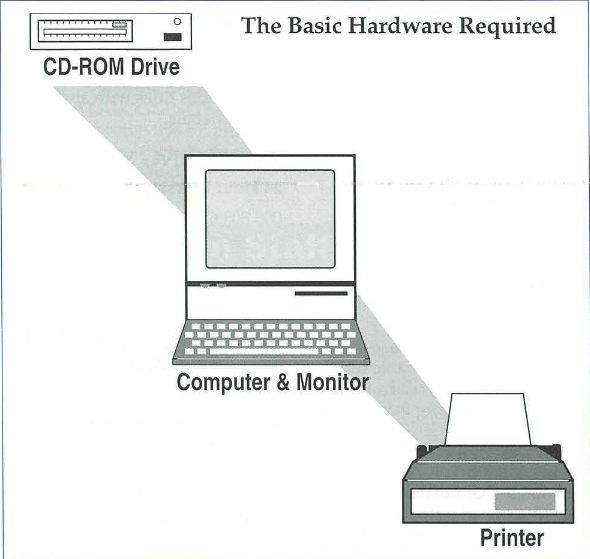Issue 1
Term 1 1992
Setting Up a CD-ROM Service in a School Library
Why Set It Up?
Curriculum changes over the past few years have resulted in a greater emphasis on resource-based independent learning, particularly on the use of periodicals as sources of current information. CD-ROM enables students and teachers to more easily and effectively search for information from encyclopedias, statistical databases and periodical indexes.
Selection of CD-ROM Databases
Factors to consider in selecting CD-ROM products include
- relevance to the curriculum
- Australian content
- coverage of journals on subscription
- ease of use
- cost
Databases Selected for Initial Purchase
This is not an attempt to provide an exhaustive list of CD-ROM products. It represents the selections made for one secondary school library.
AUSTGUIDE
As GUIDELINES is an index with which students are familiar (in print) and for which the library holds a significant coverage of the indexed journals, it was felt that this was a good beginning point. Students have found it easy to use with little instruction.
The AUSTGUIDE disc also contains Pinpointer, and a variety of ABS statistics.
Cost: $220 single disc.
AUSTROM
This disc provides access to APAIS, as well as a range of specialist indexes such as Family, Leisure, Ausport, CINCH, AGIS, ARCH, ASCIS, Home Economics Index, WESTDOC as well as Australian Education Index and Edline. (Subscription to AUSTROM will allow cancellation of print subscription to APAIS.)
Cost: $295 single disc, or $745 three discs per year.
SAGE
Science and Geography Education This disc, produced by the CSIRO, indexes general science and geography journals. It would be useful for all science subjects offered at school as it covers topics such as environment, earth science, astronomy and technology with an Australian emphasis.
Cost: $100
SUPERMAP FOR WINDOWS
Produced by Space-Time Research, this disc provides statistics from the 1981 and 1986 censuses with maps, graphs and summary statistics. It is impressive when demonstrated. The Windows version is faster and easier to use than the MS DOS version.
Cost: $1,000
ELECTRONIC ENCYCLOPEDIA (Grolier)
A general encyclopedia such as Compton's or Grolier may be bundled free with the CD-ROM drive. I selected the ELECTRONIC ENCYCLOPEDIA (Grolier) because of the search strategy which it provides. By using this encyclopedia, students learn to use rudimentary Boolean search strategies which will be transferable to other searching situations.
Cost: $595 (if not bundled with purchase of CD-ROM Drive)
HARDWARE REQUIREMENTS
A computer (IBM compatible system described here but Apple Macintosh systems are also available) and a CD-ROM drive (either external or internal) are the basic requirements. CD-ROM extensions come with the CD-ROM Drive. The ability to print information is also essential, although an existing printer may be used.
Although it is possible to use a 286 with 1mb RAM, it seems that the faster the better. A 386/25 computer with 2mb RAM, a 40mb hard disc, 5.25 or 3.25 fdd, and a VGA monitor is comfortable to use and access time is reasonably fast.
For good performance with the Windows version of SUPERMAP you will need a more powerful computer: 386/33 or 486, Windows 3.0 and mouse.
Experience in Australia and overseas has shown that the popularity of CD-ROM is enormous. It is anticipated that the newly acquired CD-ROM station will be the first of several which will be eventually networked. I If the printer is to be located in the main reading areas of the library the noise level may be a factor to consider. Quiet printers and/ or acoustic hoods could provide solutions to this problem.

SECURITY ISSUES
Consideration should be given to ways of ensuring an adequate level of supervision for reader assistance with the hardware and search strategies, as well as to ensure that deliberate mischief does not occur. Some alternatives may include locating the CDROM drive and computer close to the inquiry desk, locking the floppy disk drive, or locating the CPU away from the students, leaving the monitor and keyboard on open access.
Informit can provide technical information to prevent students exiting to DOS from any of the KAware products (and possible creating havoc on your computer!). Ask about this when you purchase your CD-ROM discs. If you allow students to bring their own floppy discs to download information, a virus protection program is advisable as a precaution against infection.